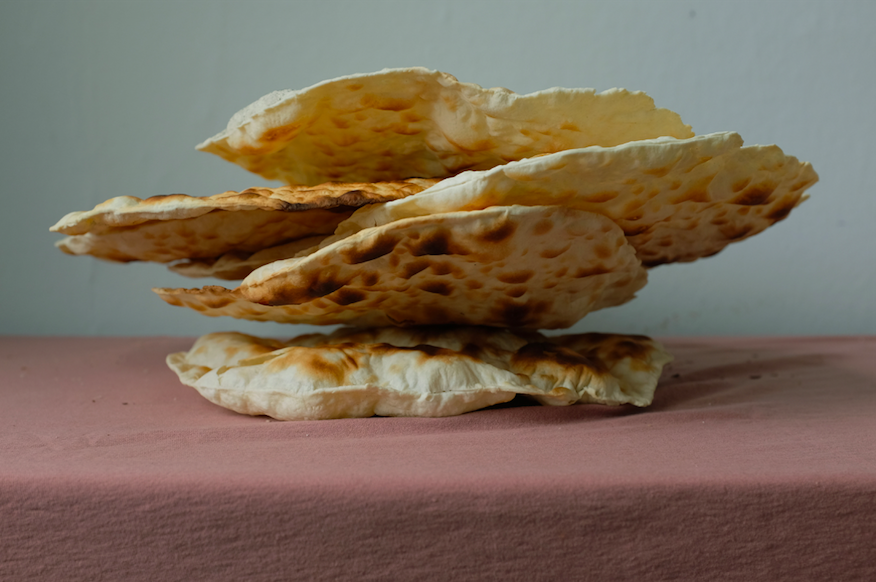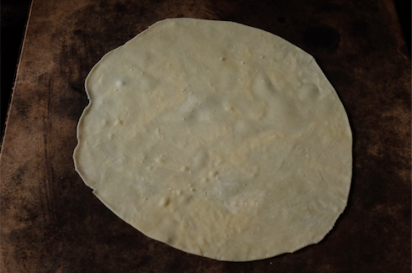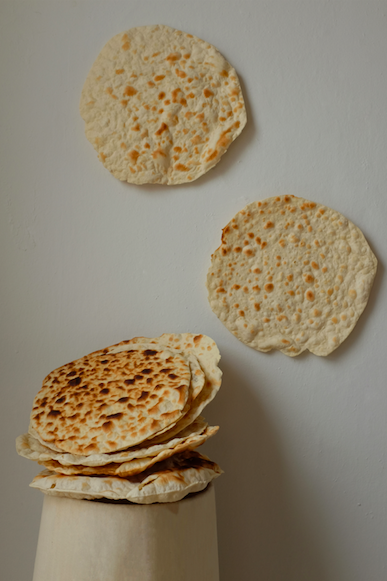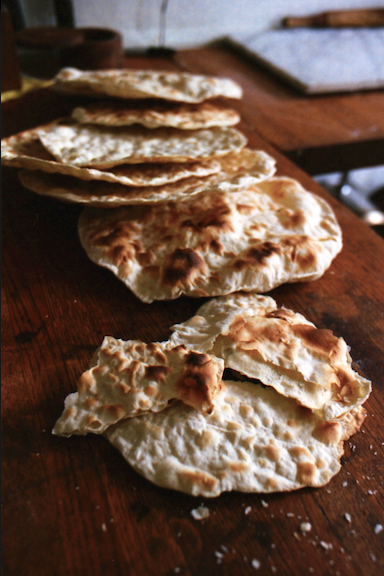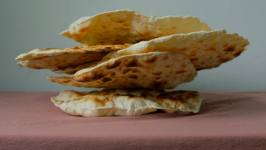Matzah and Humility, in 18 Minutes or Less
My family is full of self-proclaimed bad Jews (the bad implying negligence, not naughtiness), though we still feel the pull to engage in the occasional holiday circus. A few Aprils ago my stepmother tasked me with making matzah for our family Passover Seder, and after securing my services mentioned I had to get the job done in 18 minutes flat. She offered little explanation as to why, but I embraced the restriction like parameters of a new game, getting the dough mixed, rolled and into the oven in just under the time limit.
But being a more dedicated baker than I am a Jew, this number continued to vex me after the holiday passed. Where did the 18 minutes come from? How did it ensure that the breads were kosher for Passover? What is kosher for Passover? By the time the next Seder came around, I’d endeavored to have it all figured out.
I began by consulting a host of online forums, some of the most bellicose of digital platforms. I found an array of arguments on the matter of Passover matzah making, replete with supporting literature and each claiming authority. Chametz, the transliteration of the Hebrew word for the fermentation of grain (specifically oats, wheat, rye, barley and spelt), is declared to take place 18 minutes after grain touches water, and is inarguably the culprit behind matzah’s rapid production requirement, as it’s forbidden during the week of Passover. Remarkably, the origin of the 18-minute definition of chametz is pretty cohesive across the board, but it’s nonetheless confounding.
The time is derived from how long it takes to walk one mil, a Talmudic unit of measurement defined by the distance between two holy cities in Israel, Migdal Nunaiya and Tiberias. A variety of divergent opinions using the words “right” and “wrong,” loose mathematical equations and theoretical Talmudic interpretation all come to the table at this point. One commenter on a site called Mi Yodeya, a Jewish question-and-answer board, claims that “the 18 minute mark is almost certainly a mistake,” and goes on to argue the real distance would have been closer to six miles by one interpretation, or four miles by another, both taking much longer to stroll than 18 minutes. Further arguments hold that dough will not become chametz until after 72 minutes, or maybe ever, if it’s consistently handled throughout the day (this theory did not garner many cheers). There are entire articles written by Jewish scholars that both support and denounce the 18-minute definition of chametz, each treating the subject with a weighty earnestness. As it so often does, the internet had only muddied the waters.
The correct definition of one mil was still hanging in the balance, and now I had a more pressing question: What does the distance between two ancient cities have to do with how long it takes dough to ferment? As it turns out, not much.
“They needed to find a definition of chametz,” said Rabbi Eli Blokh matter of factly. Blokh is the director of the Rego Park Chabad, and my key advisor on the quest for matzah clarity. The “they” he’s referring to are the rabbinical teachers of yore who made enactments to biblical texts, like footnotes or amendments that help clarify a story. The explanation does not stand up to much prodding, because it’s not intended to be poked. It helps to remember that the difference between story and history is often greater than two letters, especially when religion is involved.
As a bread enthusiast, I was tempted to get caught up in questions about fermentation time, but Rabbi Blokh was not keen to linger on them. Instead, he continued to underscore the role that unleavened bread plays in Passover. “It’s right there in the hard copy,” he told me. “It’s a biblical commandment, and as such, [eating it] is not done just symbolically, but it’s something that really is very integral to the observance of Passover.”
To the Jewish people, matzah represents both humility and freedom, two notions with a surprising way of commingling, and both thematically vital to the holiday. As the rabbi did his best to sway me from science with theory, he reckoned, “We all are slaves to something,” and when personal control is relinquished to a more powerful force (in this case, to God), “you can then be free from all the things that weigh you down. Sometimes it feels like there’s no getting out of it, but during Passover it’s ‘We’ll get through this, and here’s a little something to help you.’”
Matzah is considered the opposite of chametz, and to eat it is, in the Talmudic interpretation, to forego ego. “There’s only so much ego you and other people need before you start choking,” said Blokh. But don’t mistake this Passover observance as another vote against gluten.
“It’s not a campaign against bread because, you know, we eat bread every week. Where would the world be without bagels and lox?” There’s a question I won’t be seeking an answer to.
Making the Matzah
There are two types of matzah Jewish people eat during Passover though many—Rabbi Blokh included—try to eat only shemurah matzah (meaning guarded) for the duration of the holiday. As you may be able to guess by its translation, shemurah implies that the wheat has been watched from the time of harvest through to the production of flour and on into the oven, to ensure that it’s never exposed to water for longer than 18 minutes. This large, round variety is handmade and considerably more expensive than the widely available Manischewitz and Streit’s boxes, familiar to most Jews, good and bad. Shemurah matzah can be difficult to get your hands on, with only a couple bakeries producing it in New York (all of them in Brooklyn) and the rest imported from Israel. And because the environment for making shemurah matzah requires strict adherence to kosher guidelines and a blazing hot oven, it’s almost impossible to make at home. The recipe below is kosher for Passover, but is by no means considered shemurah matzah. Regardless, it does the job in no time (well, in under 20 minutes anyway).


